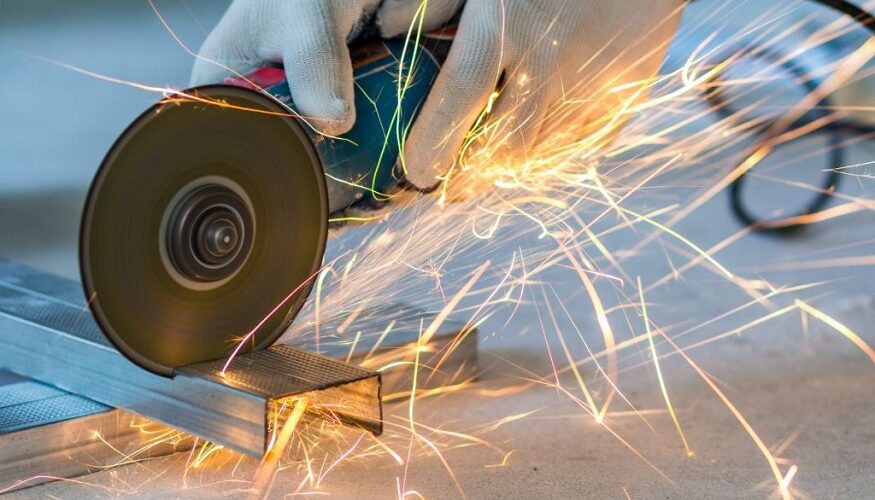In the world of manufacturing and metalworking, the efficiency and longevity of your metal cutting tools are crucial to maintaining productivity and quality. These tools endure significant wear and tear, which can affect their performance and the quality of the finished product. Regular maintenance is not just a good practice; it’s essential for ensuring that your tools operate at their best. By following a few simple yet effective maintenance tips, you can extend the lifespan of your cutting tools, reduce downtime, and improve overall operational efficiency. In this blog, we will explore ten essential tips to help you maintain your metal cutting tool solutions in Saudi Arabia effectively.
- Regular Cleaning
Keeping your metal cutting tools clean is fundamental to their performance. After each use, remove any chips, debris, or coolant residue that may have accumulated on the tool’s surface. Use compressed air or a soft brush to clean intricate parts, ensuring that no particles remain that could interfere with the tool’s operation. A clean tool not only performs better but also reduces the risk of corrosion and wear.
- Proper Lubrication
Lubrication is vital for minimizing friction between moving parts and preventing overheating during operation. Regularly apply the appropriate lubricant as specified by the manufacturer to all moving components of your cutting tools. This practice helps ensure smooth operation and prolongs the life of the tool by reducing wear and tear caused by friction.
- Sharpening Tools Regularly
Dull cutting tools can lead to poor-quality cuts, increased heat generation, and greater wear on both the tool and the workpiece. Schedule regular sharpening sessions based on usage frequency and material type. Using a sharp tool not only improves efficiency but also enhances safety by reducing the risk of tool breakage during operation.
- Inspect for Wear and Damage
Before each use, inspect your metal cutting tools for signs of wear or damage. Look for chips, cracks, or excessive dullness on cutting edges. If you notice any issues, address them immediately—whether that means sharpening, repairing, or replacing the tool—to prevent compromised performance and potential accidents.
- Store Tools Properly
Proper storage is essential for maintaining the integrity of your metal cutting tools when they are not in use. Store them in a dry, cool place away from moisture that can cause rusting or corrosion. Use protective cases or racks to prevent physical damage from impacts or falls. Keeping tools organized also helps you quickly locate what you need when it’s time to work.
- Use the Right Tool for the Job
Using an inappropriate tool for a specific task can lead to premature wear or damage. Always select tools that are designed for the material you are working with and the type of cut required. Familiarize yourself with different types of cutting tools and their applications to ensure optimal performance.
To avoid these pitfalls, it’s important to familiarize yourself with the various types of cutting tools available and their applications. This includes understanding factors such as tool geometry, coating, and material composition. By selecting tools that are specifically designed for the material you are working with and the type of cut required—whether it’s drilling, milling, or turning—you can enhance efficiency, improve the quality of your work, and extend the lifespan of your tools. Ultimately, informed tool selection is key to achieving precision and reliability in metal cutting operations.
- Monitor Cutting Conditions
Pay attention to cutting conditions such as speed, feed rate, and depth of cut. Operating outside recommended parameters can lead to overheating and excessive wear on your tools. Adjust these variables based on material properties and tooling specifications to maintain optimal performance.
- Implement a Maintenance Schedule
Establishing a routine maintenance schedule for your metal cutting tools is crucial for ensuring their longevity and optimal performance. This schedule should include essential tasks such as cleaning, lubrication, inspection, and sharpening. Regular cleaning removes debris and coolant residues that can lead to corrosion or reduced efficiency. Lubrication minimizes friction, preventing overheating and wear during operation.
Incorporating regular inspections into your maintenance routine allows you to identify potential issues—such as chips, cracks, or dull edges—before they escalate into more significant problems that could compromise tool performance or safety. Addressing these issues promptly can save time and money in the long run.
Additionally, documenting maintenance activities is vital for tracking the performance of your tools over time. Keeping detailed records of when tasks were completed and any findings during inspections can help you spot patterns in tool wear and inform future maintenance decisions. This proactive approach not only enhances the reliability of your tools but also contributes to a more efficient workflow in your operations. By committing to a structured maintenance schedule, you ensure that your metal cutting tools remain in peak condition, ultimately leading to improved productivity and quality in your work.
- Educate Your Team
Ensure that all operators understand the importance of proper tool maintenance and are trained in best practices for using metal cutting tools safely and effectively. Providing ongoing education about maintenance procedures can foster a culture of care within your organization, leading to better overall equipment management.
- Utilize Technology
Consider using technology such as monitoring systems or software that tracks tool usage and performance metrics. These systems can provide valuable insights into when maintenance is needed based on actual usage patterns rather than relying solely on scheduled intervals. This proactive approach can help optimize tool life and improve operational efficiency.
Maintaining your metal cutting tools is essential for ensuring their longevity and optimal performance in any manufacturing environment. By following these ten tips—regular cleaning, proper lubrication, frequent sharpening, thorough inspections, appropriate storage, using the right tools for specific jobs, monitoring cutting conditions, implementing a maintenance schedule, educating your team, and utilizing technology—you can significantly enhance the efficiency of your operations while minimizing downtime.
A commitment to regular maintenance of High Precision Grinding machine not only improves productivity but also contributes to safer working conditions by reducing the risk of tool failure during operation. In an industry where precision is key, taking care of your metal cutting tools will ultimately lead to better quality products and greater satisfaction for both operators and customers alike.

